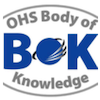Chapter 9.1: Socio-political Context for OHS in Australia
Abstract
This chapter focuses on the socio-political context of occupational health and safety (OHS). It is about the different legal and advisory instruments; state and non-state institutions or actors; political, economic and social forces; technologies; and other factors that constitute the setting for OHS practice. Collectively, these socio-political-context elements frame, shape and regulate OHS practice. They impact on OHS risks and how they are dealt with in the workplace. The chapter begins by providing a broad overview of the socio-political context of OHS, and then examines some of its key elements in more detail. These elements are OHS regulation, industry associations and unions, Australian and international technical standards, other international instruments, and economic and social trends. The chapter concludes with an outline of the national model OHS legislation, a development in OHS regulation that is both central to and has links with many other elements of the socio-political context.
Keywords: act, law, legislation, standard, inspection, enforcement, regulation, industry association, union, social and economic trends
First year of publication: 2012
Current Version: 2019
Chapter 9.1: Socio-political context for OHS in Australia
Table of contents
| 1 | Overview of the socio-political context |
| 2 | OHS regulation in Australia |
| 2.1 | The federal system |
| 2.2 | History of Australian OHS legislation |
| 2.3 | Common themes in OHS regulation |
| 3 | Industry associations and unions |
| 4 | Australian and international technical standards |
| 5 | Other international instruments |
| 6 | Economic and social trends |
| 7 | Directions in OHS regulation – the model WHS Act |
| 8 | Summary |
Key authors and thinkers
References

Dr Elizabeth Bluff BSc(Hons), MAppSc(OHS), PhD
Research Fellow, National Research Centre for Occupational Health Safety Regulation, Australian National University
Elizabeth has worked in the OHS field for 30 years in positions spanning OHS regulatory research, postgraduate OHS education, government OHS policy and legislation development, and OHS management. Initially a graduate in biological science, she subsequently completed a Masters in OHS and a PhD in OHS regulation. Her research interests are in OHS regulation, safe design, risk management and systematic OHS management.
Peer Reviewer : Professor Richard Johnstone BBusSci(Hons)(Cape Town), LLB(Hons)(Melb.), PhD (Melb.)
Professor, Law School, Griffith University; Adjunct Professor and Co-Director, National Research Centre for Occupational Health Safety Regulation, Australian National University
Chapter 9 Learning Outcomes
The OHS Body of Knowledge takes a conceptual approach which enables it to be applied in different contexts and frameworks. To optimise its value for education and professional development learning outcomes have been developed for each technical chapter in the Body of Knowledge.
The learning outcomes as described give an indication of what should be the capabilities of a new graduate OHS professional in the workplace. I t is up to those developing OHS education programs, OHS professionals planning their CPD or recruiters or employers selecting or developing people for the OHS function to consider the required breadth vs. depth
Webinars
AIHS webinar: Legal basics for understanding OHS Laws:
This webinar gets back to basics to help you to understand law in simple, easy-to-understand language, so you can better understand OSH / EHS laws and the changes that currently occurring in WA and Australia.
Date: 2018
Presenter/s:
Gregory Ho, Lecturer, Edith Cowan University
Sam Witton, Senior Associate, Seyfarth Shaw
Source: https://www.youtube.com/watch?v=W3rsC1vma_
Published 2012 Chapter 9.1 Socio Political

